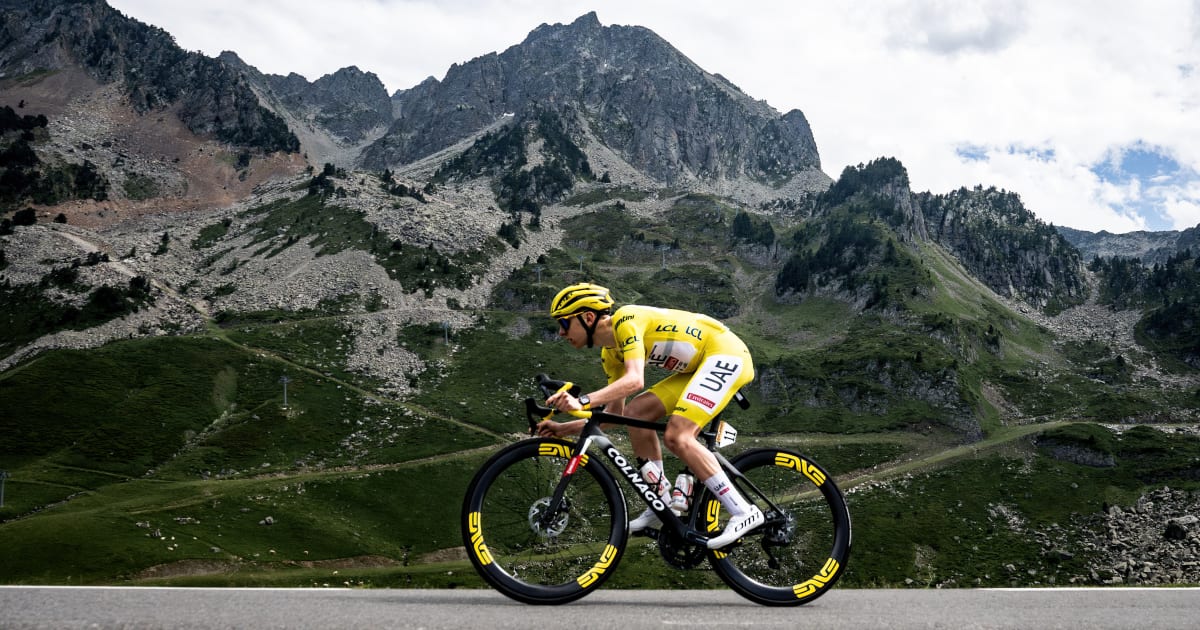What does Tadej Pogačar eat at the 2025 Tour de France?
“[Pogacar] sends me loads of ideas for things that we just can’t include – like brownies with tons of butter, loads of chocolate, that sort of thing,” says Prieto-Bellver with a laugh.
Still, the man in charge of his nutrition during the season is quick to point out that Pogacar “is incredibly disciplined”.
Even though those extra helpings of butter or chocolate are off the menu during the season, he does have his favourites among the recipes created by Prieto-Bellver and the four chefs from UAE Team Emirates-XRG: “He’s a big fan of cheesecake and beetroot risotto.”
Pre-race meal or breakfast
“At breakfast, which takes place about four hours before the stage, there are different types of foods they can choose from. The diet varies based on the recommendations I give each rider. We have a mobile app where they have a target or goal, and for breakfast they select foods to reach that target. For example, depending on the stage, we might tell them they need to reach a target of 250 grams of carbohydrates that day, so they have to reach that amount with the foods they prefer.”
Examples of breakfast foods
“We have oat and rice porridge, chocolate pancakes, apple pancakes, lemon pancakes, plain ones… We also have waffles, crepes, chocolate cookies… Different kinds of bread too, with olives, raisins, sun-dried tomato, turmeric, etc.”
Food during the race
“They receive recommendations on what to eat during the race and the amount of sodium they need to consume, which also depends on the day’s heat. We also do sodium tests to see how much sodium each rider loses per hour: some lose one gram per hour, others lose 300 milligrams. So intake is very individual.”
Carbohydrate intake during stages: how do pros adapt to the increased standard of 100-120 grams per hour?
“This has become very popular and only professionals do it. I ride myself and wouldn’t consider 120 grams of carbohydrates per hour because I’d probably have stomach issues. But the riders are used to it because they train daily.
“The intake depends on the goal of each week. Some weeks they are given very high carbohydrate amounts to build tolerance — between 100, 120, even 130 grams. Some riders can tolerate even more. It’s something they train for and it’s very individual. How often do they train? It depends on many factors. Some do it once a week, others twice… It varies by rider.
“Before, it wasn’t always done correctly because the format of bars and gels wasn’t right — they have to have a glucose-fructose ratio around 2:1 or 1:0.8. There are different types of gels. So if you only take maltodextrin, for example, you’ll have stomach problems because different intestinal transporters absorb glucose and fructose. If you only consume glucose (like maltodextrin), these transporters saturate, carbs stay in the intestine, causing stomach pain, diarrhea, etc.”
Post-race meal and dinner
“Usually, there are three post-stage meals: a liquid shake followed by two solid meals. Sometimes more meals are added depending on each rider’s energy expenditure, or sometimes fewer if the effort was less than expected.
“The post-race meals are all the same type. The quantities differ per rider, but to keep things simple for the chef, everyone eats the same dishes. If there’s chicken, everyone eats chicken; if there’s salmon, everyone eats salmon, regardless of individual preference, to maintain consistency. But in general, we have 15 types of pasta, 80 different desserts, 10 salads… Many recipes, but daily options are limited. Dinner is adjusted based on the watts produced during the race and the stage duration.”
Example of a post-stage dinner menu
- Two types of vegetables
- Three types of carbohydrates: one with sauce, one plain, and a third different option. For example: Carb 1 would be pasta with tomato sauce; Carb 2 would be either white rice or plain pasta; and Carb 3 would be pizza.
- Dessert: cheesecake, tiramisu.
- Bread
